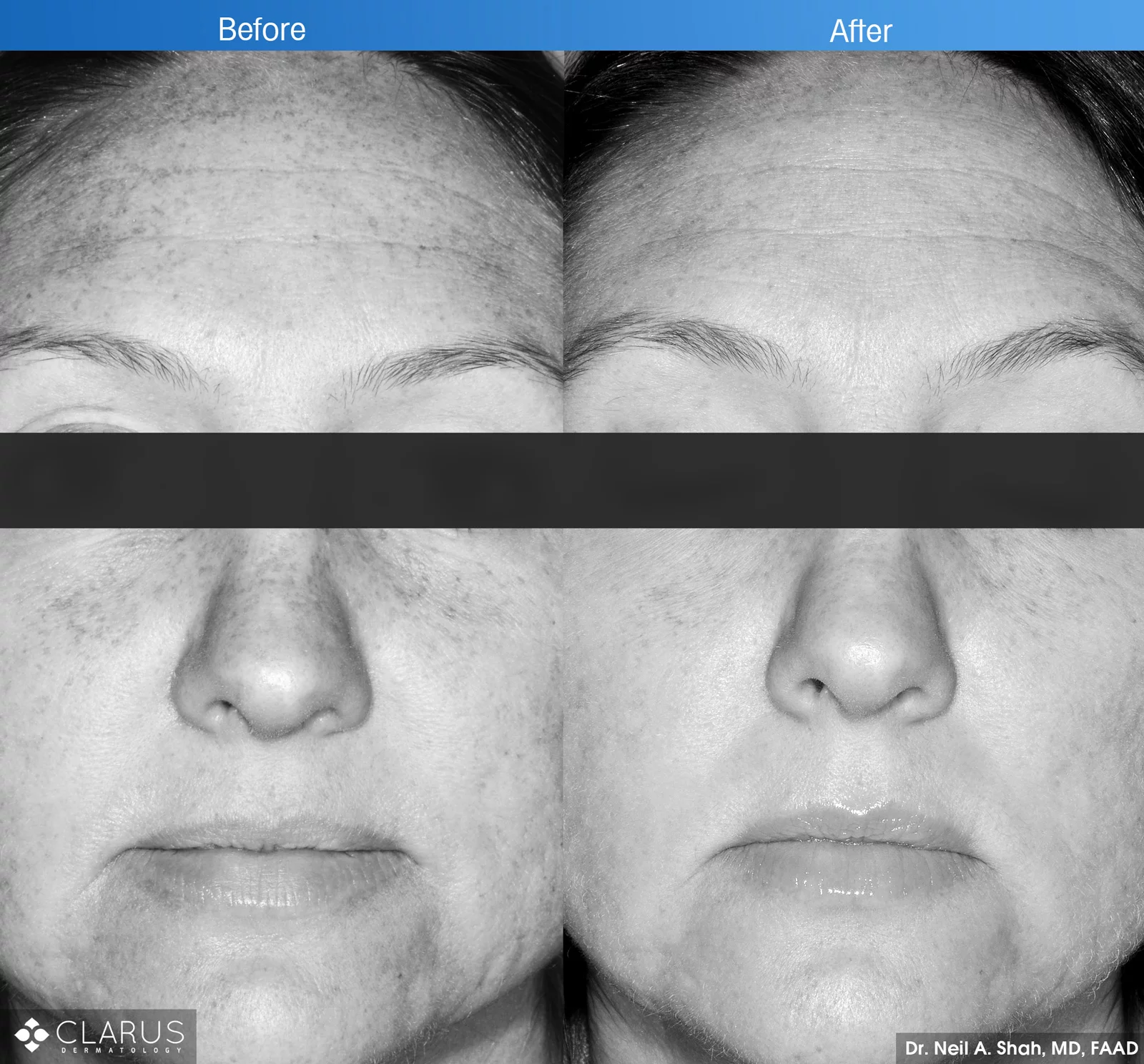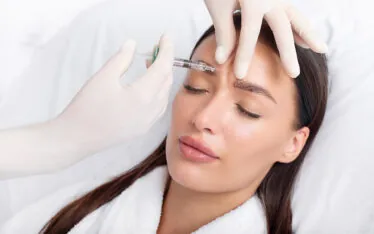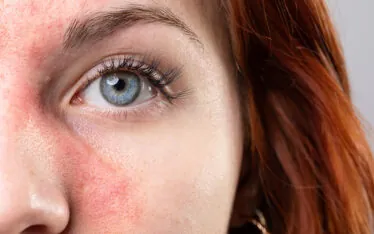Patch testing has arrived!

We are excited to announce the availability of full-scale patch testing at Clarus Dermatology. Proper Finn-chamber patch testing represents a significant improvement over more commonly available patch testing (the T.R.U.E. test). Our patches are state-of-the-art water-safe patches which allow patients to shower while they are undergoing patch testing.
What is allergic contact dermatitis?
Allergic contact dermatitis is the development of an eczema-like rash (dermatitis) on the skin in an area where a contact allergen touched the skin. A common contact allergen is poison ivy. For a poison ivy rash to develop the plant must touch a given area. Following contact with the poison ivy a rash develops only where the allergen made contact.
What is patch testing?
Patch testing involves placing dilute, purified, allergens in contact with the skin using specially designed patches and chambers. These patches sit on the surface of the skin. Patients return 3 and 5 days after patches are placed for an examination to determine if a rash has developed. A map is constructed of the allergens allowing us to determine to which allergen a patient is reacting.
Positive patch test findings are then cross referenced against the patient’s own personal care products or industrial/environmental exposures to determine whether a given positive finding is relevant to a patient’s dermatitis. Finally, a list of ‘safe-to-use’ products is generated for the patient based on their patch test findings.
Patch testing vs. prick testing
Patch testing and prick testing are very different. Prick testing, where allergens are introduced with small needles, is commonly performed by allergists. Prick testing is useful for type I hypersensitivity reactions such as hives, anaphylaxis or seasonal allergies. Patch testing is useful only for type IV hypersensitivity reactions such as non-hive rashes.
About our patch test allergens
This series, the Miller Standard Series – developed by fellow Mayo Clinic alumnus Arlo Miller, MD, PhD – represents an improvement over the standard North American Contact Dermatitis Society series with additional allergens found in common ‘natural’ skin care products. We have been seeing more allergies to these products given the proliferation of ‘natural’ skin care products which are often less extensively tested but no less allergenic for susceptible patients.
Who needs patch testing?
Your dermatologist or allergist may refer you for full patch testing if he/she is suspicious of allergic contact dermatitis playing a role in your rash. If you are experiencing recurrent rashes we would recommend making an appointment to see one of our dermatologists to determine if contact allergy is playing a role in your rash.
The Miller Standard Series includes:
| fragrance mix II |
| benzocaine |
| amerchol L101 |
| 2-mercaptobenzothiazole |
| carba mix |
| colophony |
| neomycin sulfate |
| 4-phenylenediamine base |
| thiuram mix [A] |
| dimethylaminopropylamine (DMAPA) |
| ethyl hexyl glycerol |
| formaldehyde |
| black rubber mix – PPD [B] |
| ethylenediamine dihydrochloride |
| potassium dichromate |
| bisphenol A epoxy resin |
| balsam of Peru (myroxylon pereirae resin) |
| quaternium 15 2 |
| nickel sulfate hexahydrate |
| 4-tert-butylphenol formaldehyde resin |
| methylchloroisothiazolinone/methylisothiazolinone |
| diazolidinyl urea (Germall II) |
| paraben mix [B] |
| DMDM hydantoin |
| cinnamic aldehyde |
| imidazolidinyl urea (Germall 115) |
| fragrance mix |
| bacitracin |
| amidoamine (stearamidopropyl dimethylamine) |
| mixed dialkyl thioureas |
| 4-chloro-3,5-xylenol (PCMX) |
| 2-bromo-2-nitropropane-1,3-diol ™(bronopol) |
| parthenolide |
| sesquiterpenelactone mix |
| methylisothiazolinone |
| 2-hydroxyethyl methacrylate (HEMA) |
| desoximetasone |
| propylene glycol |
| methyldibromo glutaronitrile/phenoxyethanol (MDBGN/PE-Euxyl K 400) |
| 2-hydroxy-4-methoxybenzophenone (oxybenzone) |
| tosylamide formaldehyde resin |
| 1, 3-diphenylguanidine (DPG) |
| methyl methacrylate |
| dl alpha tocopherol |
| cobalt (II) chloride hexahydrate |
| iodopropynyl butylcarbamate |
| tixocortol-21-pivalate |
| ethyl acrylate |
| budesonide |
| benzophenone-4 (sulisobenzone) |
| clobetasol-17-propionate |
| hydrocortisone-17-butyrate |
| cocamidopropyl betaine |
| disperse blue mix (124/106) |
| formaldehyde |
| propolis |
| oleamidopropyl dimethylamine |
| lidocaine-HCl |
| ethyl cyanoacrylate |
| propylene glycol |
| carvone |
| coconut diethanolamide (cocamide DEA) |
| lavandula angustifolia oil (lavender oil) |
| compositae mix |
| decyl glucoside 5 |
| glutaraldehyde |
| jasminum officinale oil (jasminum grandiflorum) |
| tea tree oil, oxidized |
| mentha piperita oil (peppermint oil) |
| cananga odorata (ylang ylang) |
| shellac |
| Carmine |
| triclosan |
| d-limonene I |
| benzyl alcohol |
| ethylene urea, melamine, formaldehyde mix |
| Gold sodium thiosulfate |
| Mercapto mix (A) |
| benzalkonium chloride |
| lanolin alcohol |


